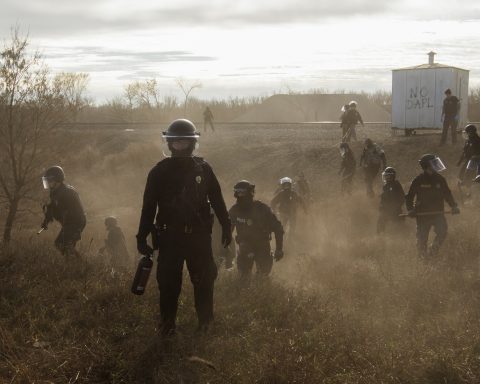As many federal, state and provincial governments struggle with paralysis from polarized politics, North America’s cities have become the front lines of climate mitigation and “build back better.”
Vulnerable and underfunded, municipalities are making brave, future-driven decisions – on climate mitigation, sustainability and inclusion – that put more senior levels of government to shame.
Chicago, for instance, just adopted its first citywide plan in more than 50 years. “We Will Chicago” is a 10-year initiative intended to promote equity, resiliency, neighbourhood growth and “a sense of belonging” for all. Diverse planning groups spent three years devising 150 objectives that span eight “planning pillars,” ranging from arts and culture to climate and energy. Development commissioner Maurice Cox says that “We Will represents the hopes and dreams of Chicagoans for a more equitable and resilient city.”
The program’s first priority: boost climate resiliency efforts in overburdened communities and for low-income individuals.
On a smaller but symbolic scale, Toronto’s city council turned heads in February by overruling then-mayor John Tory by voting 22–3 to make bicycle lanes a permanent fixture along midtown Yonge Street, a key traffic corridor. While Tory pushed for more research, Councillor (and former Ontario environmental commissioner) Dianne Saxe declared that it’s time to “rip off the Band-Aid” and choose pedestrians and cyclists over cars.
Calgary, a city in a flood plain whose historic annual temperature (4.3°C) is expected to double to 9.5°C by 2100, is piloting a new AI tool that collates satellite imagery, heat maps and demographic data to identify the communities or building sites most vulnerable to flooding or extreme heat.
Ontario’s Peel Region – the Toronto suburb whose population is expected to grow by more than 50% in the next 25 years – is next in line to use this tool, which helps planners and developers make better decisions and incorporate natural assets such as green roofs, parks and water bodies.
In the U.S., cities as varied as Baltimore, Buffalo, Tampa and Little Rock, Arkansas, are working to reconnect urban areas divided by ugly, unhealthy expressways built in the 1960s and ’70s – primarily running through marginalized communities. While the Inflation Reduction Act is providing US$1 billion in funding, cities have been called “the tip of the spear” in devising creative, sustainable solutions – such as a 12-acre green “deck plaza” that El Paso, Texas, has designed to cover a swath of Interstate 10.
For years, Ottawa residents have complained about a transport truck corridor that runs through a popular downtown tourist and residential neighbourhood just east of Parliament Hill. In
February, the Canadian Association of Physicians upped the ante by submitting a complaint to the provincial government, calling for an investigation into the route. The complaint will trigger a probe by the Ottawa medical officer of health into whether the trucks’ diesel fumes are a hazard to residents’ health.
Shakespeare got it right 400 years ago: “The people are the city,” and cities that don’t put people and environment first can expect growing opposition.





